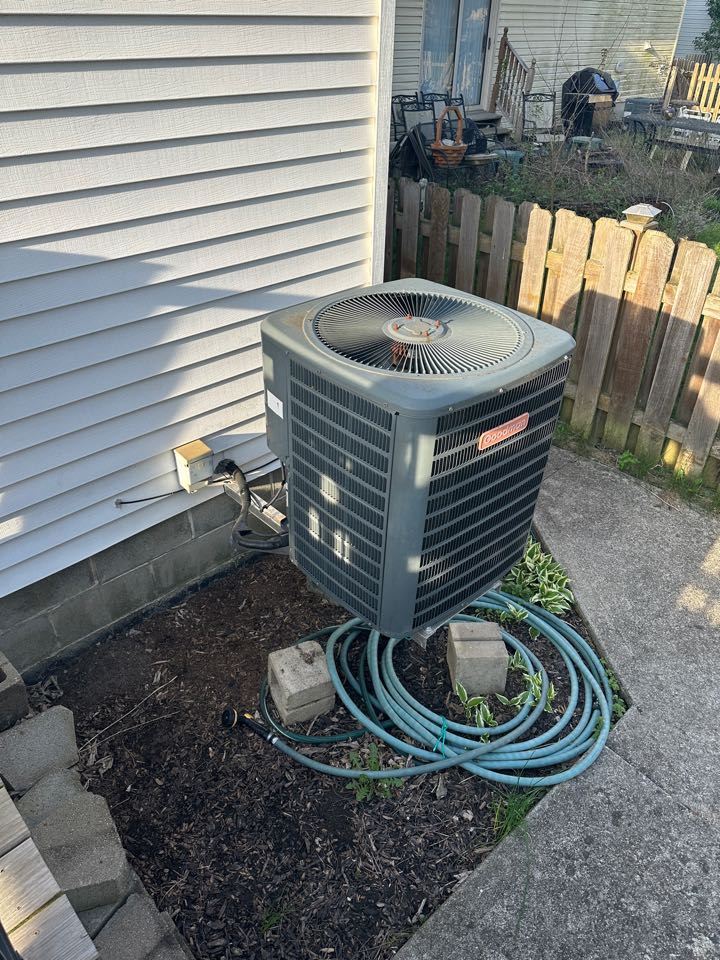
Fixing an Air Conditioner Refrigerant Leak
Did you know that it’s technically possible to fix a leak in an air conditioner?
Although it may not be the most cost efficient repair to make based on the age of the unit, fixing a leaking air conditioner can buy you some extra time to get the money needed to have a new one installed.
Let’s take a look at what all goes into repairing a refrigerant leak in an air conditioner.
Determining the Type of Refrigerant
This first step is extremely important due to the fact that putting the wrong refrigerant in your air conditioner will destroy the compressor.
You will need to determine the age of your air conditioner to verify what type of refrigerant it is using.
If your AC was manufactured before 2010 then it is most likely using R22, the old and now phased out refrigerant.
If it is newer than 2010 it will utilize R410-A refrigerant.
Locating the Refrigerant Leak
Evaporator Coil
By far, the most common place for a refrigerant leak to occur in an air conditioner is at the indoor evaporator coil.
This coil sits on top of your furnace and is what absorbs the heat from the indoor air before sending it outside to be dispersed.
This coil which is shown below, is also commonly called an “A-coil” due to it being the shape of the letter “A”.
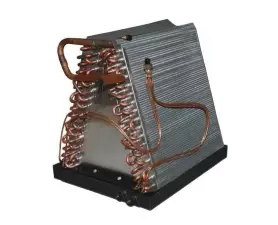
Most refrigerant leaks are very small pinhole sized leaks that can only be detected by a refrigerant sniffer or by completing a “soap bubble test” on the coil and looking for the bubbles to form.
Another quick way of locating a refrigerant leak is to look for oil on or near the refrigerant lines themselves.
Line Set (Suction Line)
Another common location that a refrigerant leak can occur is in the actual refrigerant lines themselves. These copper lines can be seen running both to and from your air conditioner and transport the refrigerant in both gas and liquid forms.
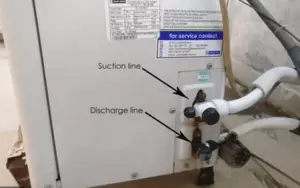
The larger copper line is called the suction line and is what actually carries the cooled gas. It is usually insulated with black insulation.
The smaller cooper line is the return “liquid line” and is what takes the heat absorbed inside the home at the evaporator coil out to the condenser unit that sits outside to be dispersed into the air.
Over time, age and as well as the outdoor elements can take a toll on these copper lines and they can become corroded and prone to small refrigerant leaks.
Condenser Unit
The condenser unit is what people are most familiar with when it comes to air conditioners as it is the unit that sits outside of your home and turns on and off throughout the day.
This unit is wrapped in both refrigerant lines as well as thin aluminum fins that help disperse the heat collected inside the home.
Leaks can occur in the condenser from old age as well as from corrosion from things like pet urine as seen below.
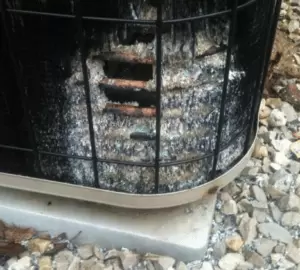
Fixing The Leak
Once you have determined where the refrigerant leak is, you ultimately have two options:
- Replace the leaking parts
- Utilize leak seal and hope for the best
Replacing Leaking Parts
This is the most permanent fix other than replacing the air conditioner all together.
As most refrigerant leaks are found at the indoor coil, an evaporator coil can be replaced to fix a leak.
By hiring a professionally licensed HVAC company to replace this coil for you, you can expect to spend anywhere between $1,200-2,000 depending on the brand as well as how much refrigerant will need to be replaced.
If there is a leak found in the refrigerant lines themselves, it’s possible to replace them but the refrigerant will need to be recovered and then replaced as well.
The copper lines should be purged with nitrogen as well to clean them of any debris that can damage the compressor.
Using Leak Seal
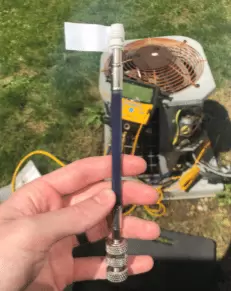
Leak seal is a good option to use if you are just looking for something to get you by until you can replace the air conditioner with a new one.
This purple liquid works similar to fix-a-flat for car tires in that it is sucked into the system and helps to fill any small leaking holes.
It is highly advised to add what is called a “hard-start kit” to the compressor if you have leak seal installed.
Adding leak sealer makes the compressor work harder than usual and the hard-start kit reduces this work load when the compressor starts up.
Adding leak sealer is not a guarantee that the leak will hold for a long period of time.
This product is meant to help buy you a few months to have a new AC installed.
It is possible for leak sealer to last several years if the leak is small enough.









